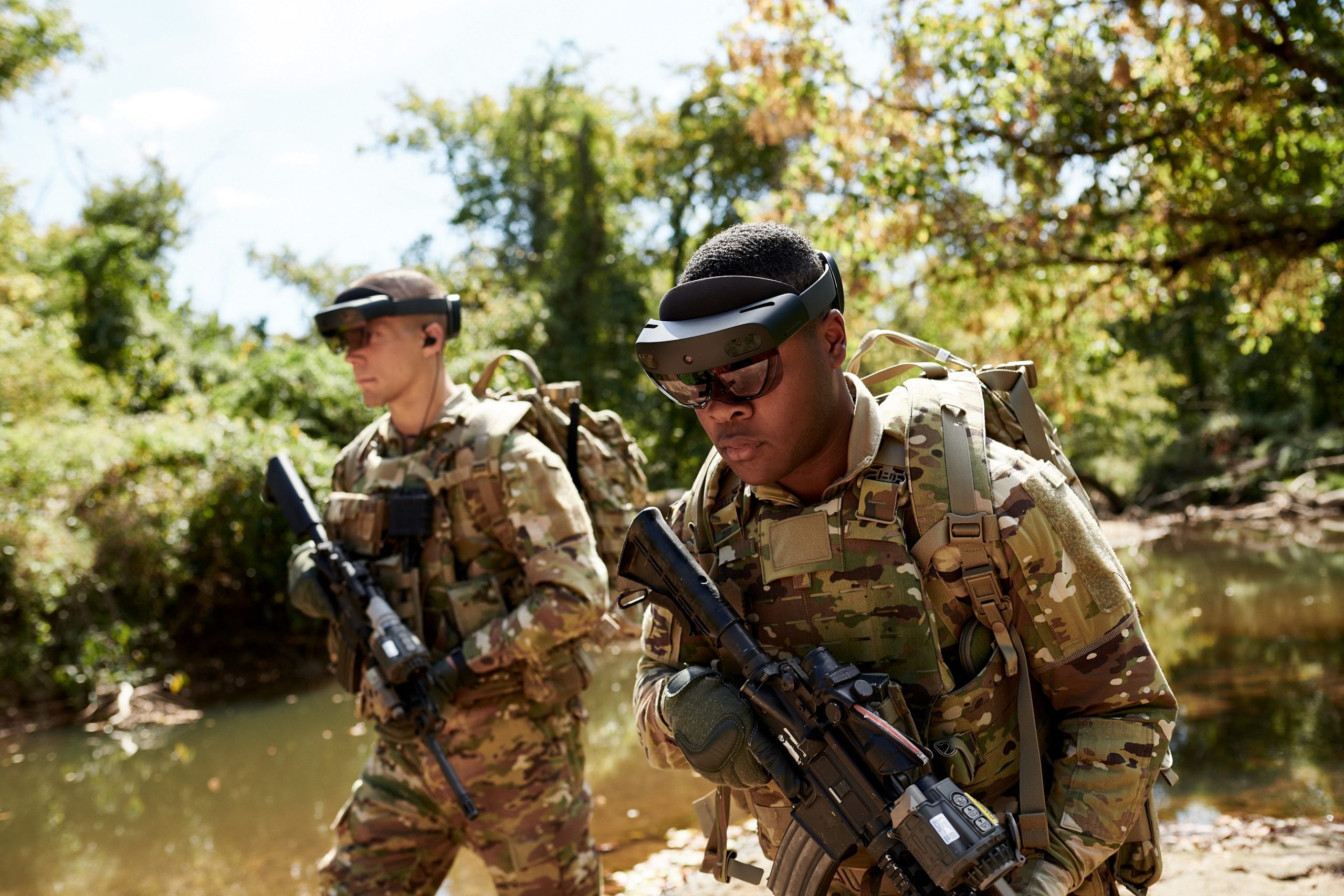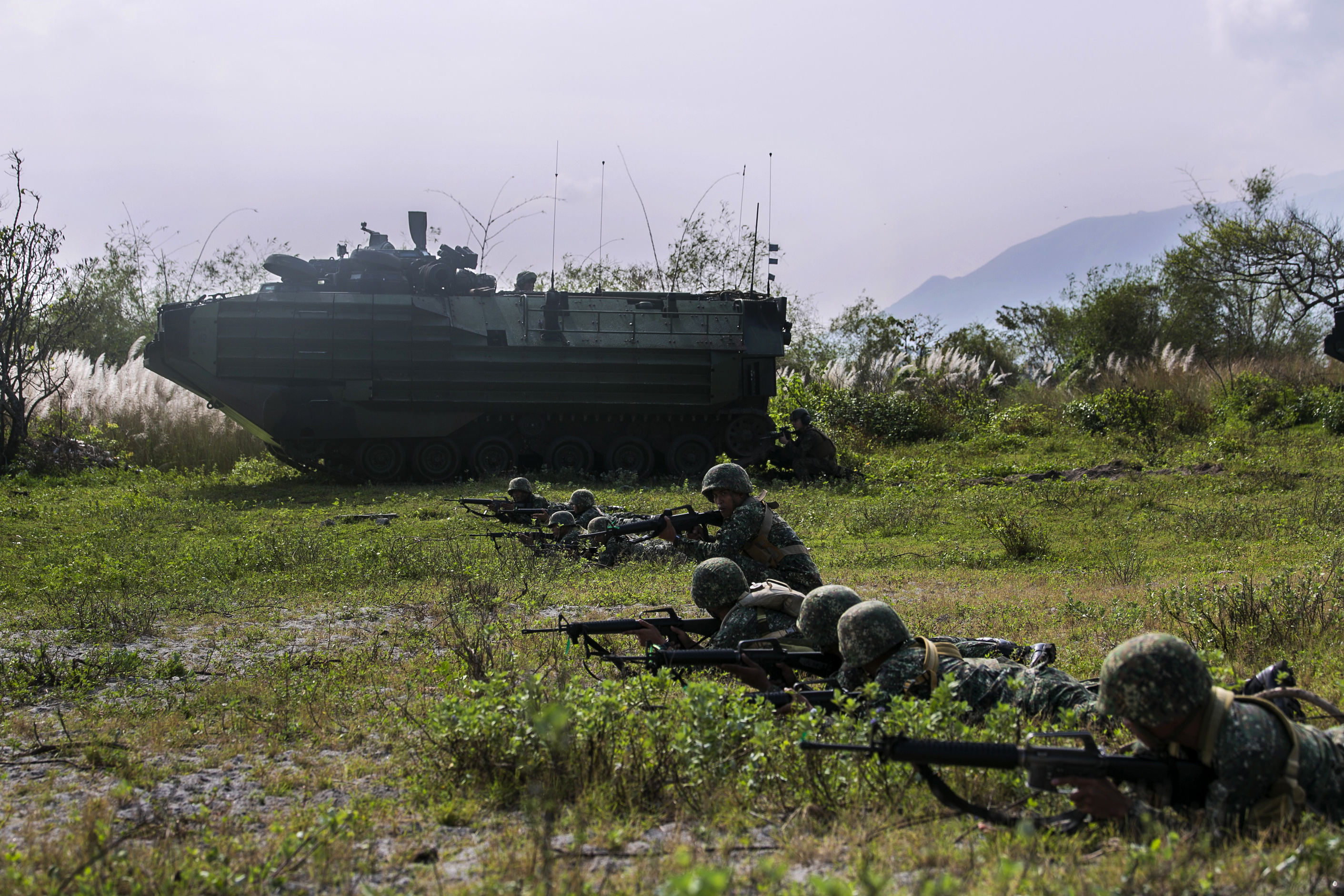Future Military - U.S. Navy Lance Cpl. Skyler Stevens uses night vision technology during a 2018 exercise at Marine Corps Base Camp Pendleton, California. (U.S. Marine Corps/Lance Cpl. Rhita Daniel/Handout via REUTERS.)
In the midst of the epidemic predicted by biosafety experts, concern has been raised about the kind of thinking that is used to predict such an epidemic. We see it everywhere—from journalism to advertising to defense programs—suggesting that a future we can only imagine is just around the corner. Look no further
Future Military

, which announced the annual "What If?" such a question provides "compelling foreboding events ... with an eye on what might happen." A recent Nike ad opens with the word "TOMORROW" splashed across the screen, then shows a world where incredible sports records are set and running shoes grow on trees. As the commercials speed up, the announcer excitedly announces "I don't know what this is, but it looks great!" while recreational riders race to cross the finish line, unaware that it is already a fixed game.
Technologies That Are Changing How The Us Military Fights
This interest in the future extends to the US Department of Defense, which has been looking to science fiction writers to help predict the nature of tomorrow's conflicts. The call for proposals has asked consultants to consider how artificial intelligence (AI) will "change the way decisions are made on the battlefield". NATO recently published a series of short stories about the future of war in 2036, and the Army Institute commissioned a graphic novel, "The Invisible Force," to explore the role of cyber attacks in 2030 conflict scenarios.
What is happening here? Is the future coming, will humanity fall prey to the power of manipulating the future, or is this wishful thinking and avoidance and facing difficult problems?
For those of us who grew up watching The Jetsons, the future is too late. In the futuristic cartoon, Rosey the Robot was the robot lady of the Jetsons. She did the dishes, cooked dinner and cleaned up after the Jetson family, fully loaded. Fast-forward to today, and you'll be disappointed: the AI-powered Roomba, which moves around the floor, removes dirt and grime, dodges obstacles, and changes direction when it encounters walls, didn't arrive until 2002—and then. it took about 20 years of adding sensors and improving AI until it could avoid getting dog poop on your floor. Even now, it's a far cry from the robot boy we thought we'd get as adults.
Artificial intelligence is everywhere. Want to play a video game, ask Google to play music for you, or ask Siri to remind you of your dentist appointment? You're already using AI. As China puts the US into the real world of automation and online machine learning, we've had enough of a taste in the US to make us hungry for more.
The U.s. Army's Future: All About Robots?
Furthermore, advanced versions of AI seem to be on the way and continue to fuel dreams of truly breakthrough technology. For example, Tesla advertises its AI automation as "The Future of Driving." It has been selling "fully self-driving" (FSD) capabilities to buyers since 2016 and promised a fully autonomous auto show from Los Angeles to New York at the end of 2017. But in the face of social controversy, these promises have fallen. very far from the truth. In November, 12,000 Teslas had to be recalled during FSD's beta test due to "unexpected activation of the vehicles' emergency braking system." According to Kai-Fu Lee, author of Artificial Intelligence Superpowers, our current age of AI "has ignited the public imagination about artificial intelligence" and "has fueled the belief that we are close to achieving what some consider the Holy Grail. The Holy Grail From AI research, intelligence artificial intelligence (AGI)—thinking machines that can do what any human spiritual task – and much more.”
The appeal of future technology, including artificial intelligence, extends to defense innovation and design. Debuting in 1984, the Terminator movies were early adopters of the fictional battlefield of artificial intelligence. After the first movie, there were good guys and bad guys with AI robots - and the good guys always won. In defense circles, the information age (economic change based on information technology) has been with us since the beginning of the 90s. But the widespread adoption and awareness of all this data and the algorithms that do things with it that lead to "tricks" is recent. The US Department of Defense has now approved plans that look at future technologies in a big way.
The changes have put COVID-19 in the headlines and on the agenda of several national decision-makers. The decline of global democracy led by US allies made the 2021 Democracy Summit front page. The discovery of nearly 300 nuclear missile stockpiles in remote areas of China, Iran's enrichment of uranium to weapons-grade levels, and recent tests of new nuclear weapons systems by China and Russia have brought them back into the news: nukes and panic. of a new arms race. Frequent and catastrophic wildfires, floods, heat waves, and deadly hurricanes remind citizens and policymakers that the effects of climate change are upon us. The diversity and severity of the threats facing humanity make alternative perspectives more urgent than ever.

We are slowly learning not to rule out fantastic predictions for the future - especially in the field of defense. When author Tom Clancy wrote about terrorists flying in the Capitol in 1994.
U.s. Military Must Adapt For Future Warfare
, the intelligence community dismissed the possibility of such an attack as fantastic. Although biosafety experts advised in the film
It helped create a watered-down story of the reality of the disaster following the anthrax attacks, it seemed entertaining rather than foreboding. Clancy was later interviewed as a 9/11 terrorism expert and today
Seems knowledgeable. In 2015, Peter Singer co-wrote the dystopian thriller Ghost Fleet with August Cole to help America win a future war with weapons.
However, like a heart attack victim switching to a vegetarian diet, defense planners and policymakers are now clearly and systematically putting our security in the hands of people who care about the future. With the zeal of converts, they rely on science fiction writers, event planners and wargamers to help "improve the future" of artificial intelligence.
Uk To Deploy 'future Soldiers' As It Plans To Expand Military Footprint Across The Globe
What's wrong with thinking about the future? Don't we need to do so to promote innovation and avoid potentially destructive paths? Or is the vision of the future just a cynical move by complacent decision-makers who avoid making decisions that require compromise?
Focusing on the future can lead to not preparing for today's risks. Despite the pandemic, preparing for the future of COVID-19 is limited to flawed technical solutions rather than those that focus on social and political complexities. Although we are confident that future mRNA vaccines can be rapidly adapted to new mutations, they cannot prevent the occurrence of such mutations; Only a global vaccine push can do that. Instead of focusing on doing the difficult but doable diplomatic arms control job of preventing the latest arms race from turning into a disaster, America's response to China and Russia testing hypersonic glide weapons has been to develop hypersonic capabilities and "national pride" at risk. , fails to recognize that US actions could lead to complex political reactions that could spiral out of control.
One response to the threat of climate change is that future generations will have better technologies to limit or remove greenhouse gas emissions from the atmosphere, and advocate technical solutions rather than political and social solutions. These arguments often do not take into account the incentives to innovate that may be needed to make this true. Imagining a future with better, cheaper, and more efficient technology allows decision makers to avoid difficult decisions, ignore trade-offs as usual, and underestimate the amount of progress that current technologies can make possible. Approaches such as "stability wedges," which attempt to find solutions to climate change using current technologies, can counter this potentially catastrophic lag.

Another, more subtle problem with longing for the future is the tendency to lock yourself into a certain situation, like a drunk looking for his keys under a pillar because there's better light. In the 1960s, 90% of RAND's nuclear war scenarios involved a surprise (unlikely) attack on US soil. Similarly, 9/11 led to an emphasis on unlikely airplane strikes, which led to greatly increased security at airports. There is still no vaccination mandate or flight testing requirement, almost two years into the pandemic. It took nearly a year for the CDC to focus on airborne transmission of COVID instead of fomites, despite a report from China in early January 2020 and Japan's experience on the Diamond Princess cruise ship showing that airborne transmission is the primary vector for virus transmission. Pandemic preparedness in the United States had visions of influenza or biological weapons like anthrax or smallpox, leaving us unprepared for the new coronavirus.
Iot, Ai, And The Future Battlefield
Even now we are not ready for future diseases. No country scored more than 80 points out of 100
Future us military helicopters, future military armor, future military technologies, future military robot, future military helicopters, future military communication technology, future drones military, future us military aircraft, future military tech, future military aircraft, future military vehicles, future technology military
0 Comments